- Why thickness?
- Density & Thickness
- Thickness range
- Ultra-thin mats
- Thin yoga mats
- Medium-thick mats
- Thick yoga mats
- Extra thick yoga mats
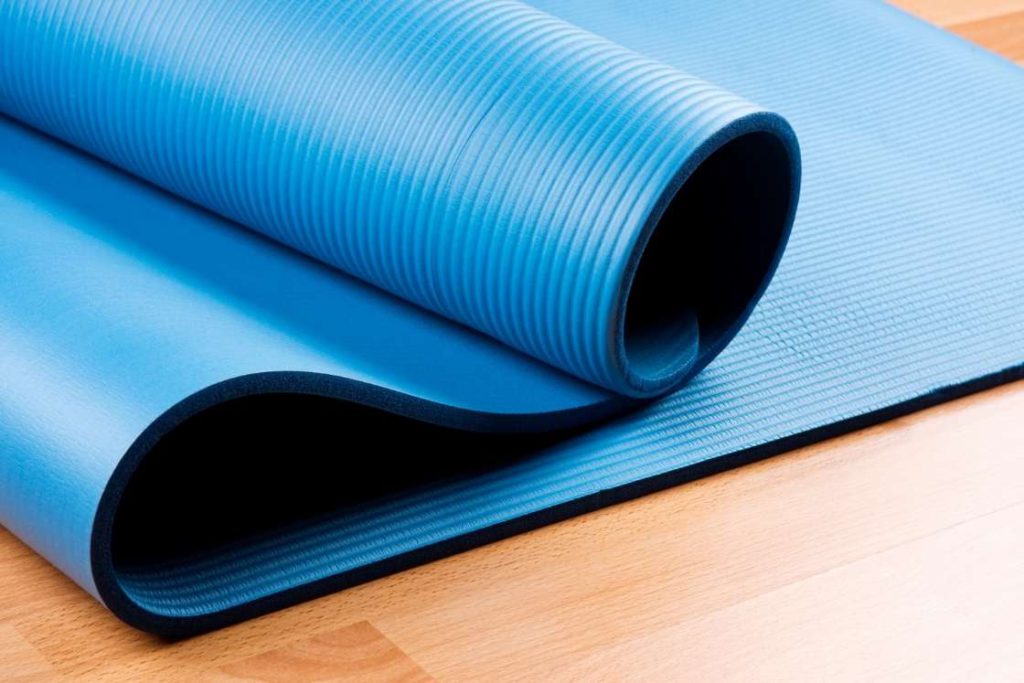
The thickness of a yoga mat is one of the key considerations for comfortability and durability. It decides how comfortable your yoga practice will about to happen. Especially in those backward bends where your joints pressed against the hard floor surface.
However, choosing an extra-thick yoga mat could add challenges in your balancing posture and it can take much space on folding. What works here is thickness between extra thick and ultra-thin mats!
In this article, we will see the importance of yoga mat thickness, in what different thickness mats come, and how can we decide which thickness is best for you.
Why do you need to consider thickness?
That’s because the thickness of your mat will decide many fundamental practice experiences. One might even add, that a mat thickness compatible with your yoga routine, will allow the yoga poses to work to their full potential.
Thickness of yoga mat simply implies to the many key characteristics of it.
- Cushion: The foremost factor that is affected by the thickness is the level of comfort and cushioning. The mat thickness, combined with its density, will determine the cushioning factor. You will need this cushion, especially as a beginner, to provide better support to your joints. The cushion also makes the pose hold comfortable, and pain won’t interfere with your concentration. Lastly, the cushion will also come in handy to break your fall, if, by any chance, you lose your balance.
- Balance: Ideally direct contact with the ground is best for upright balancing positions. However few millimeters of the mat will not make any major perceivable difference to your balance. But the thickest mats available in the market could prove counter-balance, especially if you are a beginner. For balance, the thin to medium thick mats fare quite well.
- Fluid and moisture absorption: The thickness of your mat will determine how much you can sweat on it, without causing disturbance to your balance. Naturally, thin mats will absorb less sweat and moisture than a thick ones.
- Durability: Although yoga mat materials mostly determine durability, thickness too will play a prominent role. Thin mats will be easily prone to abrasion on repeated tensile impact, hence less durable.
- Flexibility: The thickness of your mat, along with the density determines the flexibility of your mat. Thick and dense mats are usually hard to fold and bend, as compared to the thin ones. Flexibility will be of importance especially while traveling and storing is a matter of concern.
- Weight: Well it needs no rocket science to figure out that thick mats will weigh more than thin ones. Now initially this may seem like an insignificant and trivial detail. But once you start carrying them around all day long, you will notice how the heavy ones weigh you down.
- Environmental impact: When you use mats of materials like PVC, EVA, and different foams, your thickness will determine the damage you cause to the environment. These materials are hard to decompose and when thrown away add toxic chemicals to the ground. So more thickness to your mat will mean eventually more of that non-renewable material will mix with the soil. Now sure, it’s just a couple of millimeters you might think, but when the whole world thinks alike, it will add up to kilometers.
Know the density, before thickness
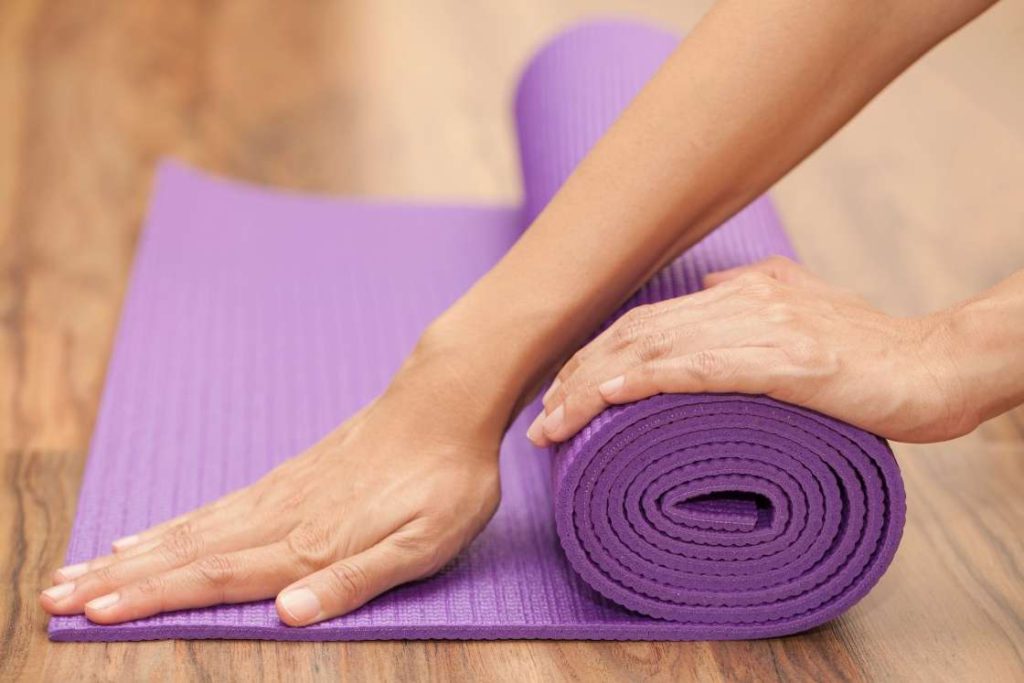
As a buyer, you need to be aware of the role density plays hand-in-hand with thickness. Almost every area of practice experience affected by thickness is also affected by density. Whilst thickness of yoga mat is the distance between the base layer and the top layer, density is how closely the mat material fibers are packed within that distance. If the thickness itself generates the base property for your mat, density determines the quality of that property.
For instance, a thick yoga mat means that it will have more cushion. However, the feel of the cushion will be determined by the density. Densely packed materials will give the mat a firm cushioning, whereas, loosely packed materials will give a soft cushioning. When practicing yoga a firm cushion will also give better grip and support.
The bottom line is, your thickness won’t mean a thing until it has the right density within. You will find many cheap EVA yoga mats that have low density but decent thickness, and with extensive usage compresses and flattens out. Now, you also don’t want mats with very densely packed materials, it will make your mat less flexible, less breathable, and heavyweight. Medium to medium-high dense should be your target, and accordingly, filter out your mats before choosing the thickness.
Different thickness of yoga mats
A measure of 1/8 inch (or 3.17mm) is considered the standard thickness of a yoga mat. Most of the yoga mats are typically between 1/8 to 3/16 inches thick (or approx. 3 to 5mm). Yoga mats in 4 to 5mm thickness range give an adequate amount of comfort and enable the most stability, hence perfect for most people.
The thickness you need in your yoga mat varies on a lot of different criteria. Now ideally the medium thickness is considered an all-rounder; the one with 1/8 inch (or 3.17mm) thickness. Many yogis consider it the sweet spot of mat thickness. However, if you have more targeted requirements for your usage, you will have to move up or down the thickness scale.
Taking 3 to 5mm as a reference thickness range, a mat above 5mm thickness can be called extra-thick yoga mats. Usually, thick yoga mats come in 6 to 10mm thickness, in that too, ultra-thick mats also available with up to 13mm thickness. These extra-thick mats are a good option for the gym workout, flooring exercise, and people with sensitive knees and wrist joints.
So how thick your yoga mat should be?
1. Ultra thin yoga mats – 0.4 to 2mm
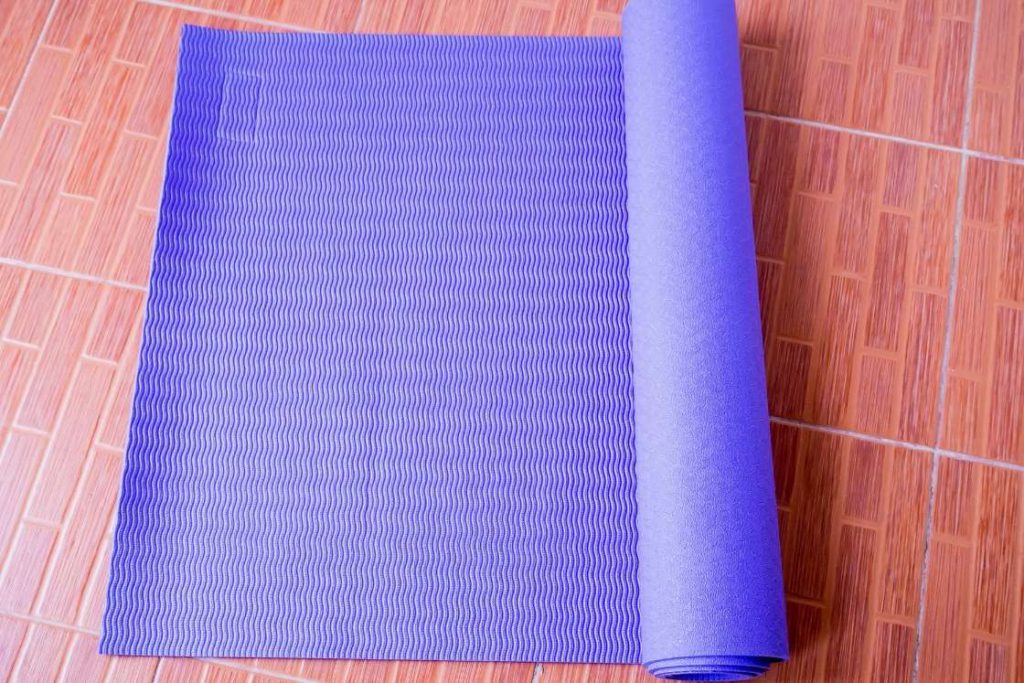
The ultra-thin mats are designed specifically keeping in mind the travel need of practitioners. The cushioning is obviously going to be low with these mats. After few sequences of practice, during the pose hold, you will feel the ground pushing against your joints. You also must not expect much fluid or moisture absorption from these mats. The ultra-thins will quickly get sweaty.
The balance and grip will not be an issue with these mats if the material is natural and dense. On the utmost plus side, you will be able to carry these mats anywhere, in anything. Folding and bending the ultra-thin mats are the easiest, not to mention they weigh the lightest. Note the 0.4 mm mats are extremely thin, and they are only worth considering if the material is something like natural rubber or cork.
Who needs ultra thin Mats?
- These are definitely for people who travel a lot and practice yoga on the go.
- Someone who really wants a natural rubber or cork mat, but you are low on budget.
- Someone with a need for a synthetic material mat, but also wants to minimize the carbon footprint.
- People who mostly practice seated light restorative poses, seated meditative poses, and pranayama.
2. Thin yoga mats – 2 to 4mm
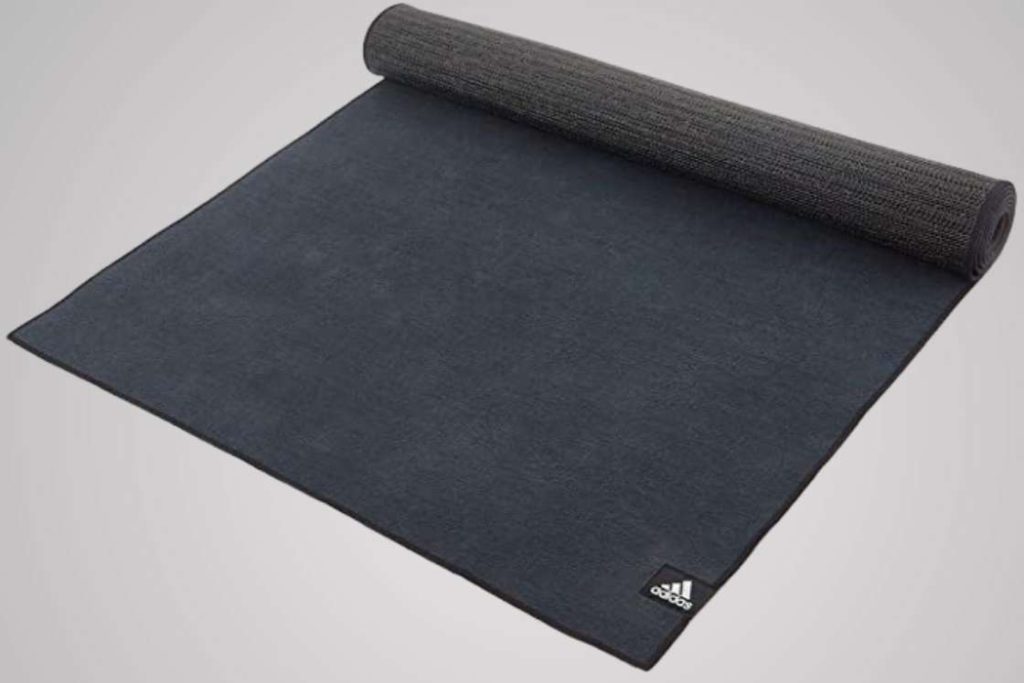
Thin yoga mats are widely loved and appreciated since they offer decent cushion upgrade over ultra-thin ones. These might not absorb fluid well, but they manage to absorb moisture. The thin mats like its ultra-thin variant, are competently flexibly, lightweight and portable. Since most of the natural fibers weigh heavy, they are usually found to be in this range of thickness. The natural fibers being naturally dense, a thickness of around 3mm allows them to provide a sufficient cushion.
Who needs thin mats?
- Anyone who travels a lot and requires decent cushioning as well.
- Intermediate to advanced level practitioners who can adjust at different cushion levels.
- Someone who wants natural fiber as a material and is willing to pay slightly higher.
- Someone who wants a multipurpose usage of both traveling and storing.
- A practitioner who prefers to feel the ground through the mat, to feel more grounded.
3. Medium Thick yoga mats – 4 to 5mm
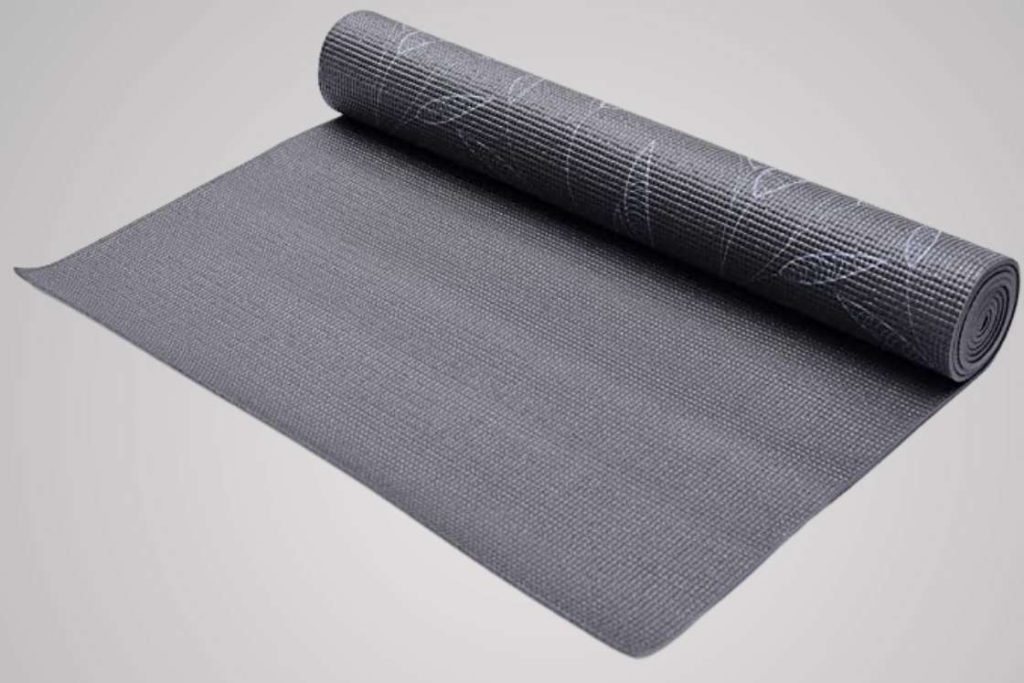
Most Yogis find the mats with the thickness of 4 to 5mm to be the most diverse ones. They are generally lightweight and flexible, but only when made of synthetic materials. If you have a 5 mm yoga mat of materials like natural rubber, jute, and cork, flexibility and weight will take a hit. However, that is the only point that you could consider as a downside.
The mats in this thickness range will have the perfect cushioning for regular yoga poses, and will support a variety of yoga styles as well. The medium thick mats can sufficiently absorb moisture and fluid. And finally in this range of thickness you will probably find a greater variety of material options.
Who needs medium thick mats?
- Someone looking for a versatile mat.
- Someone looking for the best quality natural rubber, cotton, cork, or hemp mat.
- An intermediate practitioner who is planning to upgrade difficulty level.
- A practitioner who needs a lot of cushions, yet not completely cut from the feel of the ground.
- Someone who has a lot of advanced level yoga poses in routine like, handstand, peacock pose, and crow pose.
- Someone who is looking for a long-term investment in a yoga mat.
4. Thick yoga mats – 6 to 8mm
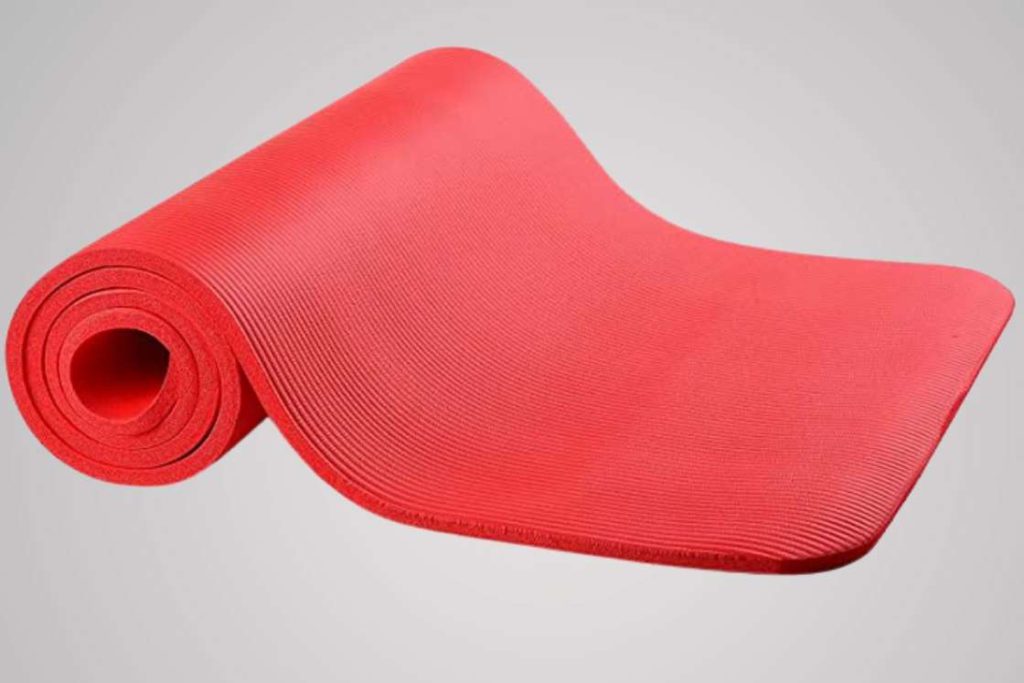
As you go up on the thickness, they stop being versatile. They come with quite a few advantages but also with an equal number of drawbacks. It’s safe to say, thick mats are not for everyone.
Thick yoga mats have a lot of cushions, but they also make you feel slightly distant from the ground. The thick mats are very breathable and efficiently absorb moisture and fluid. The balancing and grip will not necessarily be an issue, it’s just that you will feel less grounded. At this thickness range, you will mostly find mats of synthetic materials. Synthetic material that pose the threat of health hazard and environmental hazard.
Pure cork and natural rubber yoga mats seize to exists at and beyond 6 mm. Such thick mats of natural rubber and cork become very heavy and lack handling convenience, not to mention the huge cost. Having emphasized the downsides, there is still a need for this thickness depending on certain yoga styles, difficulty levels, and individual physical forms.
Who needs thick mat?
- If you are considerably overweight and are new to yoga.
- Beginners who find it difficult to withstand the pain to joints.
- Who practices yoga styles like hot yoga and rocket yoga, that gets you to sweat a lot.
- Someone who has a lot of lying down poses like savasana, makarasana, and cobra pose; the comfort will also help you concentrate.
- Someone practices inversion poses balancing on the base of the head and neck, like Sarvangasana, halasana, and setu bandh Sarvangasana.
- Someone with conditions like arthritis or piles; the cushion will be much needed for them
5. Extra thick mats – 10 to 13mm
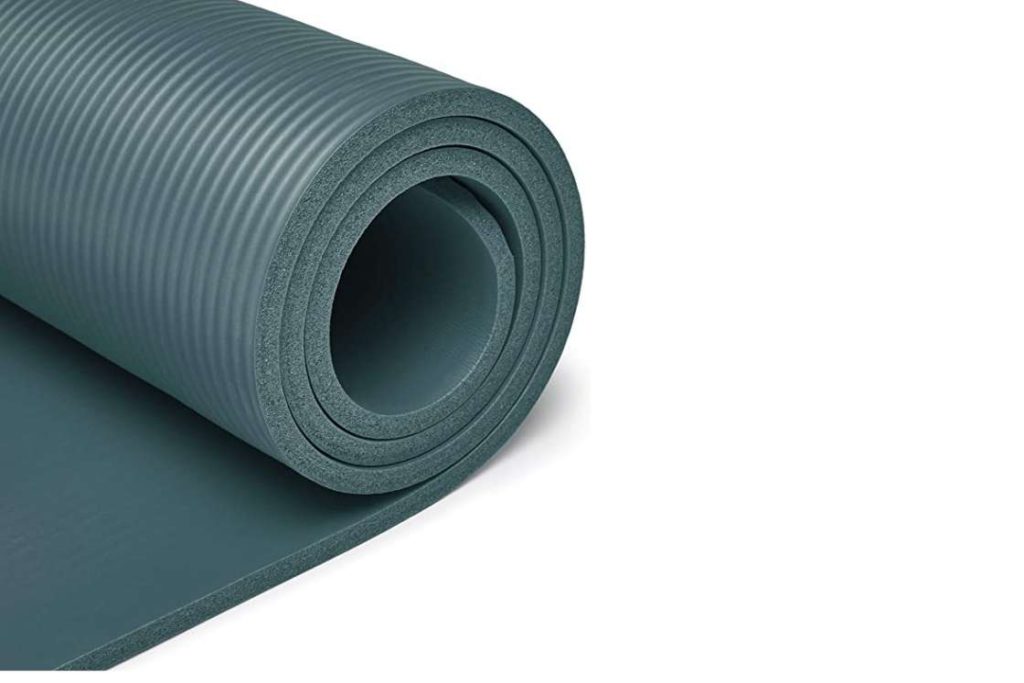
These mats are the thickest mat available in the market, and they have very specific purposes. Using them makes no sense if you are not in real need of them.
The cushioning of these mats is often too much for comfort. Ultra-thick mats are most certainly of synthetic materials. At this thickness, the mats have a huge absorption capacity. The grip and balance however will be a major issue. Half the time of your session you will be struggling to find the right balance. If you practice a lot of standing balances like the vrikshasana and warrior pose, do not even think of the mats at this thickness range. But once again, there will be certain specific conditions when these ultra-thick mats will be needed.
Who needs extra thick mats?
- Anyone with chronic conditions of piles, arthritis, and orthopedic disorders.
- People recovering from different surgeries and injuries.
- People who simply practice sitting meditation and lying restorative poses; although it will still be an extravagant expense.
- People with neurological disorders or other conditions have a risk of falling.




